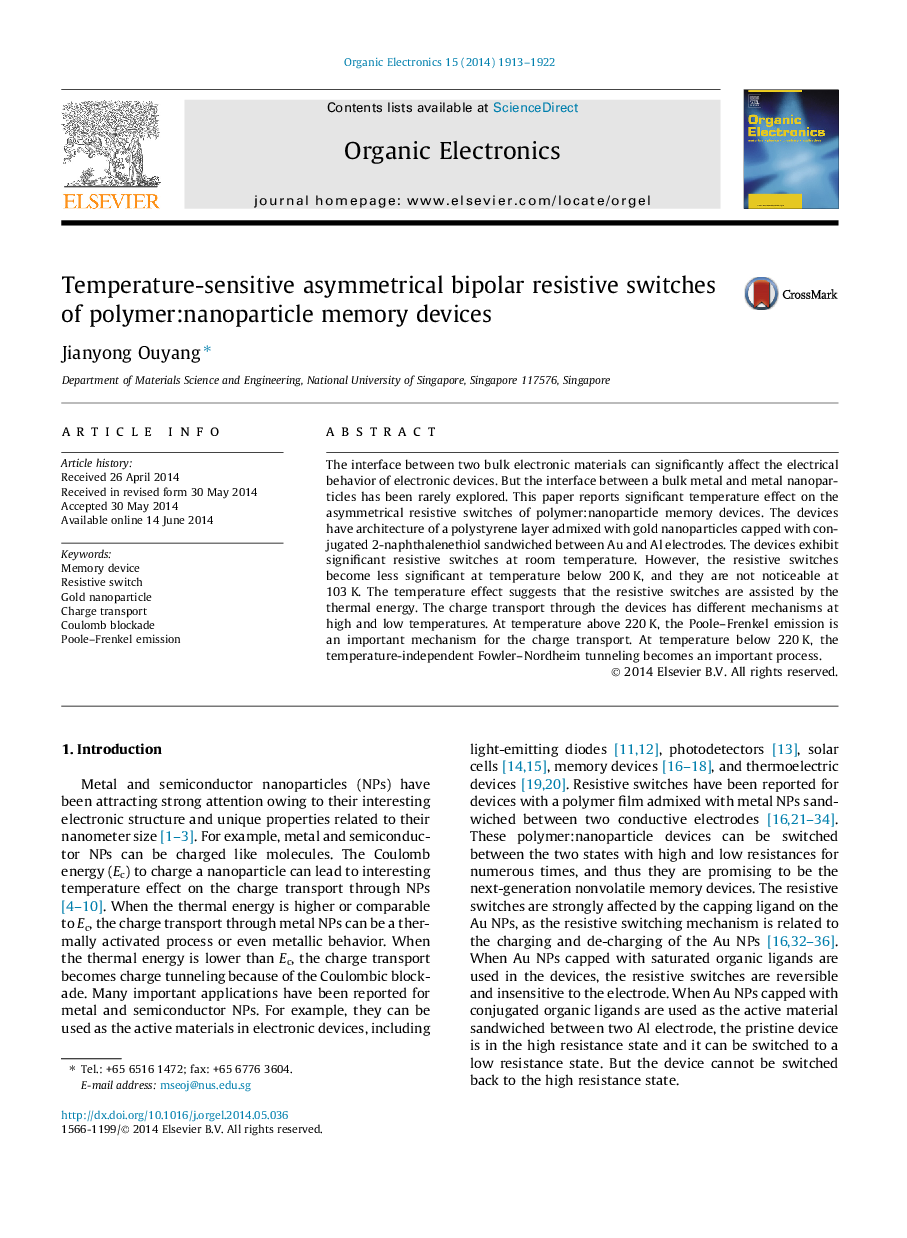| Article ID | Journal | Published Year | Pages | File Type |
|---|---|---|---|---|
| 1264874 | Organic Electronics | 2014 | 10 Pages |
•Asymmetrical resistive switches on devices with Au nanoparticles capped with 2-naphthalenethiol.•The resistive switches are sensitive to temperature.•The resistive switches become insignificant at low temperature.•At T > 220 K, the charge transport is thermally assisted.•At T < 220 K, temperature-insensitive tunneling becomes important.
The interface between two bulk electronic materials can significantly affect the electrical behavior of electronic devices. But the interface between a bulk metal and metal nanoparticles has been rarely explored. This paper reports significant temperature effect on the asymmetrical resistive switches of polymer:nanoparticle memory devices. The devices have architecture of a polystyrene layer admixed with gold nanoparticles capped with conjugated 2-naphthalenethiol sandwiched between Au and Al electrodes. The devices exhibit significant resistive switches at room temperature. However, the resistive switches become less significant at temperature below 200 K, and they are not noticeable at 103 K. The temperature effect suggests that the resistive switches are assisted by the thermal energy. The charge transport through the devices has different mechanisms at high and low temperatures. At temperature above 220 K, the Poole–Frenkel emission is an important mechanism for the charge transport. At temperature below 220 K, the temperature-independent Fowler–Nordheim tunneling becomes an important process.
Graphical abstractFigure optionsDownload full-size imageDownload as PowerPoint slide
